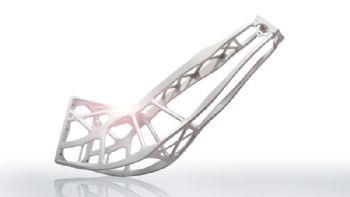
Global technology group Oerlikon (
www.oerlikon.com) has entered into an additive-manufacturing (AM) research alliance with Linde (the world’s largest industrial-gases company) and the Technical University of Munich (TUM) to develop new high-strength lightweight aluminium-based alloys that can serve the safety and weight reduction needs of the aerospace and automotive industries.
The Bavarian Ministry of Economic Affairs is funding 50% of the 1.7 million euro research project.
This research partnership was born out of the additive manufacturing collaboration announced in early October, when TUM, Oerlikon, GE Additive and Linde announced the establishment of a Bavarian additive-manufacturing cluster and an Additive Manufacturing Institute to promote higher levels of collaboration and cross-disciplinary research.
The partnership said producing the optimum aluminium alloy with a high content of lightweight elements like magnesium through an AM process requires a deep understanding of chemistry, thermo-dynamics and fluid dynamics.
During the manufacturing process, the metal powder is applied one layer at a time on a build plate and melted using a laser beam.
This fuses the metal powder together and forms the desired complex, three-dimensional geometries. The process takes place in a well-defined shielding-gas atmosphere.
Alper Evirgen, a metallurgist at Oerlikon AM, said Oerlikon’s expertise in powder and material science will contribute to the development of the ‘novel’ material.
“Using our proprietary Scoperta-RAD software, which enables big data simulation and analysis, we can provide solutions for the development of new materials and performance optimisation of available materials.”
Marcus Giglmaier, project manager at the AM Institute, said: “There are significant challenges during the additive manufacturing of aluminium alloys, because the temperatures reached in the melt pool create an extreme environment that leads to evaporation losses of alloying elements with comparatively low boiling temperatures — such as magnesium.
“Additionally, the cooling rates of more than 1 million °C per second create high stresses during the solidification process, which can cause micro cracks in the solid material.”
Linde says its expertise in gas atmosphere control and evaporation suppression during the AM process — including the processing of aluminium-based alloys — overcomes impurities within the print chamber, helping manufacturers to achieve optimal printing conditions.
Thomas Ammann, one of Linde’s AM experts (
www.linde.com), said: “Characterising and controlling the gas process during AM has the potential not only to prevent evaporation losses but also to accelerate the entire printing process.
“Using a tailor-made gas chemistry for the new alloy would help to control the processes occurring in the melt pool and minimise the compositional changes of the alloys, as well as preventing cracking during printing.”